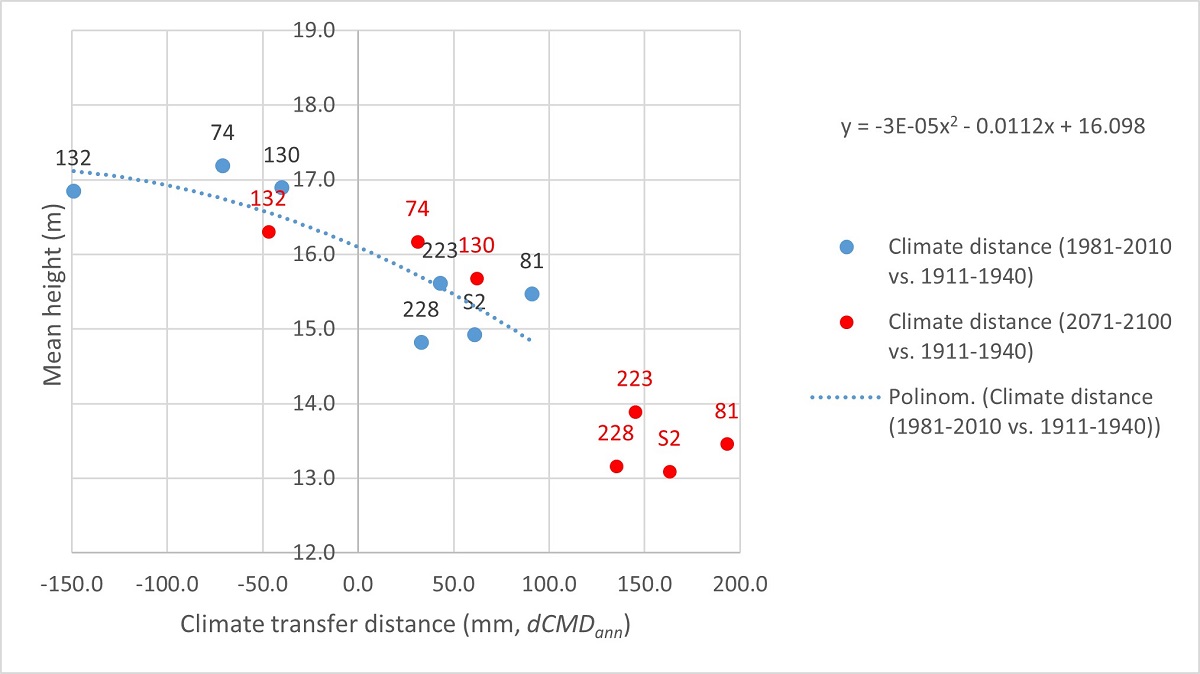Research Highlights: Data of advanced-age provenance tests were reanalyzed applying a new approach, to directly estimate the growth of populations at their original sites under individually generated future climates. The results reveal surprisingly high resilience potential of fir species. Background and Objectives: The growth and survival of silver fir under future climatic scenarios is insufficiently investigated at the xeric limits. The selective signature of past climate determining the current and projected growth was investigated to analyze the prospects of adaptive silviculture and assisted transfer of silver fir populations, and of the introduction of non-autochthonous species. Materials and Methods: Hargreaves’ climatic moisture deficit was selected to model height responses of adult populations. Climatic transfer distance was used to assess the relative drought stress of populations at the test site, relating these to the past conditions to which the populations had adapted. ClimateEU and ClimateWNA pathway RCP8.5 data served to determine individually past, current, and future moisture deficit conditions. Beside silver fir, other fir species from South Europe and the American Northwest were also tested. Results: Drought tolerance profiles explained the responses of transferred provenances and predicted their future performance and survival. Silver fir displayed significant within-species differentiation regarding drought stress response. Applying the assumed drought tolerance limit of 100mm relative moisture deficit, most of the tested silver fir populations seem to survive their projected climate at their origin until the end of the century. Survival is likely also for transferred Balkan fir species and for grand fir populations, but not for the Mediterranean species. Conclusions: The projections are less dramatic than provided by usual field assessments. Some results contradict generally accepted concepts. The method fills the existing gap between experimentally determined adaptive response and the predictions needed for management decisions. It also underscores the unique potential of provenance tests.

